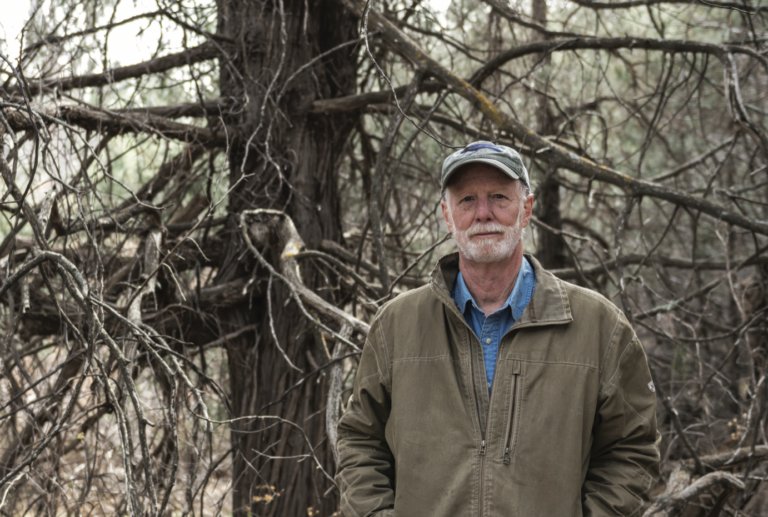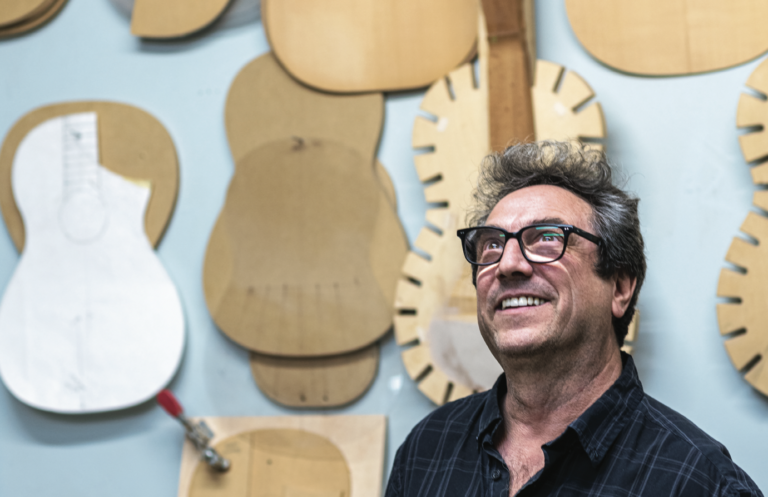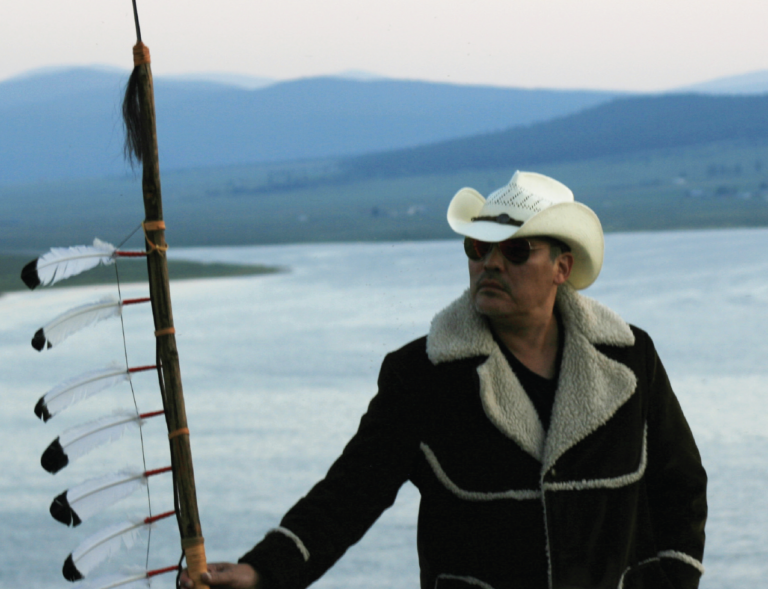WATER—AND MORE PRECISELY the lack of it—is this community’s most pressing environmental issue.
Then you meet Joel.
An applied naturalist and expert on permaculture, he wields gratifyingly practical advice on environmental healing, including how to “Plant the rain, build soil, support plant growth, feed the clouds, capture atmospheric carbon, and enable a rich future.”
His authority comes not just from research and gritty observation, but also from how he practices such sustainability solutions in business and life. His students love him, and apply the same lessons.
We can do this.
We had an abundant monsoon season this year. Is there any reason tobelieve climate change may be a little less pronounced here?
We did escape the worst of this year’s heat waves because of monsoon rains coming off of the Pacific and the Gulf Coast. It’s one of the real blessings of this climate, and I think we have no way of knowing if it will continue. Last year we certainly didn’t have a very good monsoon, and they have always been our saving grace. But it’s anybody guess; if the rains keep up year after year, it will certainly make New Mexico different than most of the rest of the West. The other aspect of this to keep in mind is that there has not been enough snow in Colorado, so there isn’t going to be enough water in the river system to use in Santa Fe, Albuquerque, all the way down the Rio Grande. Out in Canada de Los Alamos, for most of the year they’ve had no water in their wells…a whole community’s water system. Santa Fe has continued to drill wells and pass legislation to move water around between basins, but the same thing is happening here.
And how about the elevation? What does that do for us?
Well, it certainly makes it cooler in general. New Mexico, even though we have mountain ranges…it lives in its basins. So Santa Fe is a basin, Taos is a basin, you have the whole Española valley. The Rio Grande valley has mountains on both sides, and most of the human habitation is there…Española, Santa Fe, Albuquerque, Socorro, Belen, Las Cruces, all based on one river: the Rio Grande. And for many years, the river has been going dry before it gets down to the south. We’re blessed to have these basins—such as in Albuquerque and Taos, and even Santa Fe—that have groundwater, but it’s limited. This lack of runoff makes efficient use of the water we do get absolutely vital, and the way we have approach water policy generally is making that challenge harder.
It’s a pattern that has been followed in the West for, I don’t know, 150 years, where we’re diverting water from one watershed to another and concentrating it, particularly in urban areas. Originally, it was concentrated for agriculture…and you see what’s happening with the dams on the Colorado River, to the point where Las Vegas, L.A., and other really large cities are in danger of having no water. It’s already getting below outlets they were pumping from a year ago.
One of your areas of study is how development has affected that situation.
Yes. The way we typically approach development tends to be destructive to living systems, whether human or nonhuman, but it can also improve and regenerate places, actually enable them to flower and express themselves in all the ways humans and nonhuman communities depend upon.
Most of the living communities on the planet are a mixture of annuals—plants that grow up for a year—and perennials—shrubs, trees, and groundcover that live for many years—as well as animals, including insects, etc. Our agriculture and community plantings tend to be single monocultural annuals, and that causes all kinds of soil erosion problems, all kinds of pollution problems, all kinds of carbon problems. The beauty of permaculture is that it demonstrates how our biological climate actually works as opposed to all the mechanistic ways we think it should work.
How can better development help our water situation?
There are all these beauties in nature, because it grows exponentially, and if you can find even little changes, you can shift systems rapidly. Water harvesting is one of the critical ones to think about, because if you can concentrate water that falls on a large area into a small one, you can have the effect of the precipitation of a rain forest—can take that five to 12 inches we get and concentrate it into 60 or 80 inches in an area where you’re actually growing things.
And these can be very simple structures we’re talking about…many small structures are more foolproof than a single large one. It’s one of the reasons why inventive rotational grazing is becoming popular. Animals are actually making small water catchments with their feet, and the grasses are catching the soil and catching the runoff, soaking it into the ground. We could also, say, drop trees onto contours, place rocks, plant cactus. Modern humans are fans of the big and expensive, but nature doesn’t work that way. Nature works wherever raindrops fall.
What other specific steps should we take?
I’d say, first, catch and infiltrate rainwater in the ways I just mentioned, as comprehensively as we can. Also, no organic matter should go to the dump. It should all be composted and returned to the soil, and we should plant that water, plant our carbon, plant organic matter, and plant gardens. We’ve got something like 40% to 60% food waste in this country, and the majority of it happens within the home. If all that matter goes back into the soil, it could help reverse desertification—the loss of that carbon. It’s going to hold moisture, feed the plants, and feed us.
Keep in mind the effect of catching rainwater on roofs, too…at a home system cost of about a buck a gallon. Let’s say you have a 1,000-square-foot roof. For every inch of rain, you’re going to get a half-gallon for each square foot, so with a one-inch rain you’ll get 500 gallons off the roof.
Let’s say you want to catch three or four inches of rain…that’s two thousand gallons, and a few thousand bucks to build a system that will hold it. And that’s the most expensive way to catch. If you can store it in the soil, it costs virtually nothing. You’d also make that soil more permeable, so water is able to soak in and infiltrate, and that’s a way you recharge the water table.
And then there’s solar, both passive and active. There’s this very simple rule in design: in temperate regions, if a building has a longer axis east-west than north-south, it will have a 30% energy savings—be cooler in the summer and warmer in the winter, simply because of the way the sun moves through the sky. Most houses are made to face the street, though…have that kind of imposing façade and all those other things that we inherited from feudalism.
In terms of active solar that generates electricity, people should be getting more money from the power they’re making. Another piece that would really make a difference is the development of micro-grids, so if the large grid went down we could be self-sufficient using the energy being produced all over the place. There should be low-interest loan programs for everyone to put solar on their homes. If you want to bring jobs and offset energy income losses from oil and gas in the state, that’s a way to do it, and that’s money that would pay off in taxes within five to 10 years. Everyone already has an electrical box on their home; it’s easy to tie it in, and there are already laws in New Mexico that you own your solar rights. Your neighbor cannot build anything to shade your solar gain.
There’s concern about “predatory” or “invasive” species in Santa Fe. I love my Siberian elms, for example, but they’re not native.
This issue of invasive exotics is a really important one, and many responses to it reflect looking at water as if it were a commodity, instead of a currency of exchange in the living world. If you think about water in the soil being wasted by going into trees and into the air, then elms and all other trees would be bad, right? But trees are the means of exchange between earth and sky—taking water into the sky, taking sunlight and turning it into sugar, and taking carbon dioxide and turning it into carbon in leaves and bodies and roots. So, any tree is taking carbon out of the atmosphere and sequestering it…any tree is cycling moisture and seeding the clouds.
Elms are only here because we cleared out all the trees that would have been where they’re growing now. There would have been cottonwoods and willows and ponderosa [pine] all up and down the arroyos, along with a whole range of plants, but we cut the trees down…grazed the snot out of the land until it was bare dirt. Then the USDA brought in the elms and salt cedars and Russian olives because they grew fast to control erosion, which might not have been the greatest selections. They probably should’ve worked with native plants, but the reason that they were able to take off like they were was because there were so many niches available for them. There was so much bare soil that they’ve taken off, and we’re really lucky we have them, because if we didn’t, we’d have nothing.
To make a plant “good” or “bad” seems a little ridiculous, right? It’s like the whole argument over marijuana. Is it a good plant or a bad plant? It’s a plant, and plants are the skin of the earth. And no, it’s not native, but neither are we. Japanese philosopher farmer Masanobu Fukuoka used to say that just like a burn victim, we need to make sure the earth does not lose too much of her skin cover. It’s too late to worry about what plants; we just need to make sure she is covered with them.
How do you think COVID-19 has affected an appetite for these changes?
To begin with, it’s gotten people to appreciate being outside, and when they were home, there was more time to consider things. I think people are hungry to do things together now. That’s a lot of potential.
The Iroquois have a wonderful way of greeting the day: an address of thanksgiving…to be grateful for the whole living world. The chorus used at the end of each stanza finishes, “And now our minds are one.” Death can make us appreciative of life, of what we’ve got, if we are humble enough, and the same is true of climate change. It could be the best thing that’s ever happened to us if it gets us to stop, notice what’s going on, and change the way we see the world.
Learn more at regenesisgroup.com
Photo Nadav Soroker








